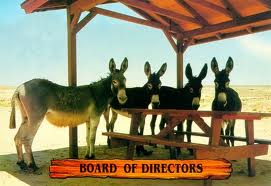 A few weeks ago I received an odd email in my inbox. It was so foreign to me that I marked it “unopened” and let it sit there as I marinated on it. It wasn’t until just today that I felt willing to re-open it and share its contents with you. Here is how the first paragraph of this jarring email started (and I’ve changed the names to protect the innocent):
A few weeks ago I received an odd email in my inbox. It was so foreign to me that I marked it “unopened” and let it sit there as I marinated on it. It wasn’t until just today that I felt willing to re-open it and share its contents with you. Here is how the first paragraph of this jarring email started (and I’ve changed the names to protect the innocent):
The board of directors of the XYZ non-profit agency is looking for leaders to help drive our further development. If interested, please contact John Doe, Board Secretary jdoe@gmail.com to receive an application /board questionnaire which is due by November 4, 2011; for terms that will run from January 1, 2012, through December 31, 2013 (2-year term limits).
The email went on to provide details about this organization’s goals and advertise its upcoming conference in downtown Chicago.
At first, I was flattered to be asked and then I realized that it was a eBlast and I was not special. So, I closed the email and went into “stewing mode” and here is what has been coming together in my head over the last few weeks:
- Why is there a “general call for applications”? Why not target supporters and donors?
- How did I get on this email list in the first place?
- How desperate must this group be for quality board members?
- Can they possibly learn enough about me from a paper application that would help them conclude whether or not I’d be a quality board member?
 While many people will tell you there is a right way for a non-profit organization to set-up its board development process, I know that I’ve seen many different variations throughout the years. However, every process regardless of how it is set-up should probably include elements of the following: prospect identification, prospect evaluation, prospect ranking, prospect recruiting, orientation, training, annual evaluation, and celebration/recognition. There are many different ways to do each of these steps, and I suppose a “general cattle call” could be one way. Needless to say, I am skeptical.
While many people will tell you there is a right way for a non-profit organization to set-up its board development process, I know that I’ve seen many different variations throughout the years. However, every process regardless of how it is set-up should probably include elements of the following: prospect identification, prospect evaluation, prospect ranking, prospect recruiting, orientation, training, annual evaluation, and celebration/recognition. There are many different ways to do each of these steps, and I suppose a “general cattle call” could be one way. Needless to say, I am skeptical.
Building your non-profit organization’s board of directors is like building a family. Perhaps, a better analogy would be it is like baking a soufflé. You need to be deliberate and careful. Here are just a few considerations I suggest your board development committee look at during the prospecting phase:
- What does the prospect’s social network look like? Does it overlap too much with existing board volunteer’s circle of friends and influence?
- Does the prospect’s network provide fertile ground for new fundraising efforts and provide opportunity for the organization to expand its donor base?
- Does the prospect have the skill sets and experiences that you are looking for to fill gaps on your board to be an effective fundraisers?
- Is the prospect a “wing nut” whose personality will upset the balance of personalities who already sit around your board room table?
- What general skills sets and interests does this person bring to the table? How are they willing to leverage those things on behalf of the organization? What committee, task force or project(s) will the prospect bring value and are they willing to do so?
- Is the prospect a donor? If not, are they willing to be a donor who is open-minded to “sacrificial giving” every year to your organization?
- How many other boards does the prospect serve on? If they have other board commitments, do they have a firm grasp on the concepts of “fiduciary responsibility” and “conflict of interest”? How do they plan on mitigating their conflicts and how have they done so in the past?
If you’re not careful from the very beginning of your board development process with identification, evaluation, and ranking, then you run the very real risk of your board soufflé falling. In real world terms, this typically means dysfunction and the worst case scenario using ends with some sort of board room conflict (with “someone” possibly getting fired).
If you want to read more about board development, please read my recent blog post titled: “Don’t put Dorothy on your board of directors“.
What does your non-profit organization’s board development process look like? How do you keep the conversation from naturally drifting to: “I know this person who would just be great on our board. Let’s just go ask them before someone else grabs them!”? Do you use a committee to do your board development work? If so, what does that committee look like? What are your thoughts about the aforementioned non-profit’s “cattle call” application process? Are you skeptical like me or am I missing something?
It only takes 30 seconds to scroll down your computer screen and weigh-in with a quick comment to one of these questions. Please take a moment to do so because we can and should all learn from each other.
Here is to your health!
Erik Anderson
Founder & President, The Healthy Non-Profit LLC
www.thehealthynonprofit.com
erik@thehealthynonprofit.com
http://twitter.com/#!/eanderson847
http://www.facebook.com/eanderson847|
http://www.linkedin.com/in/erikanderson847











